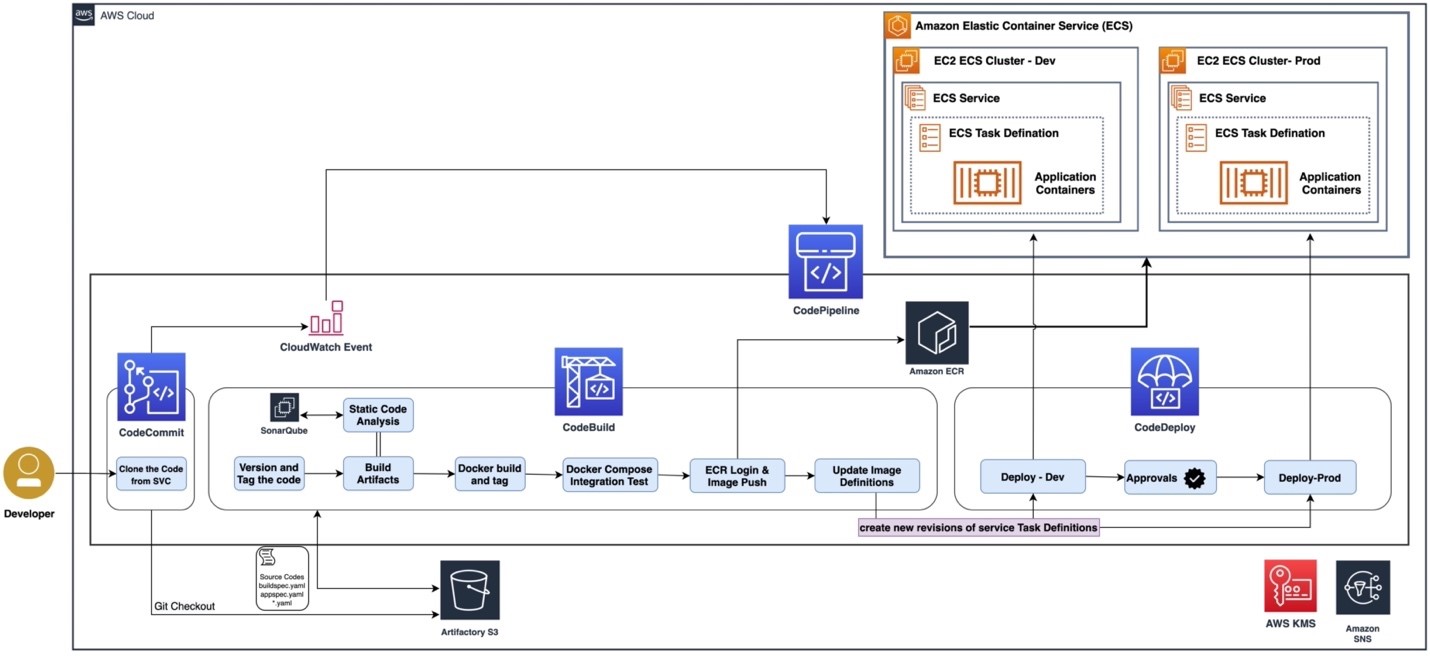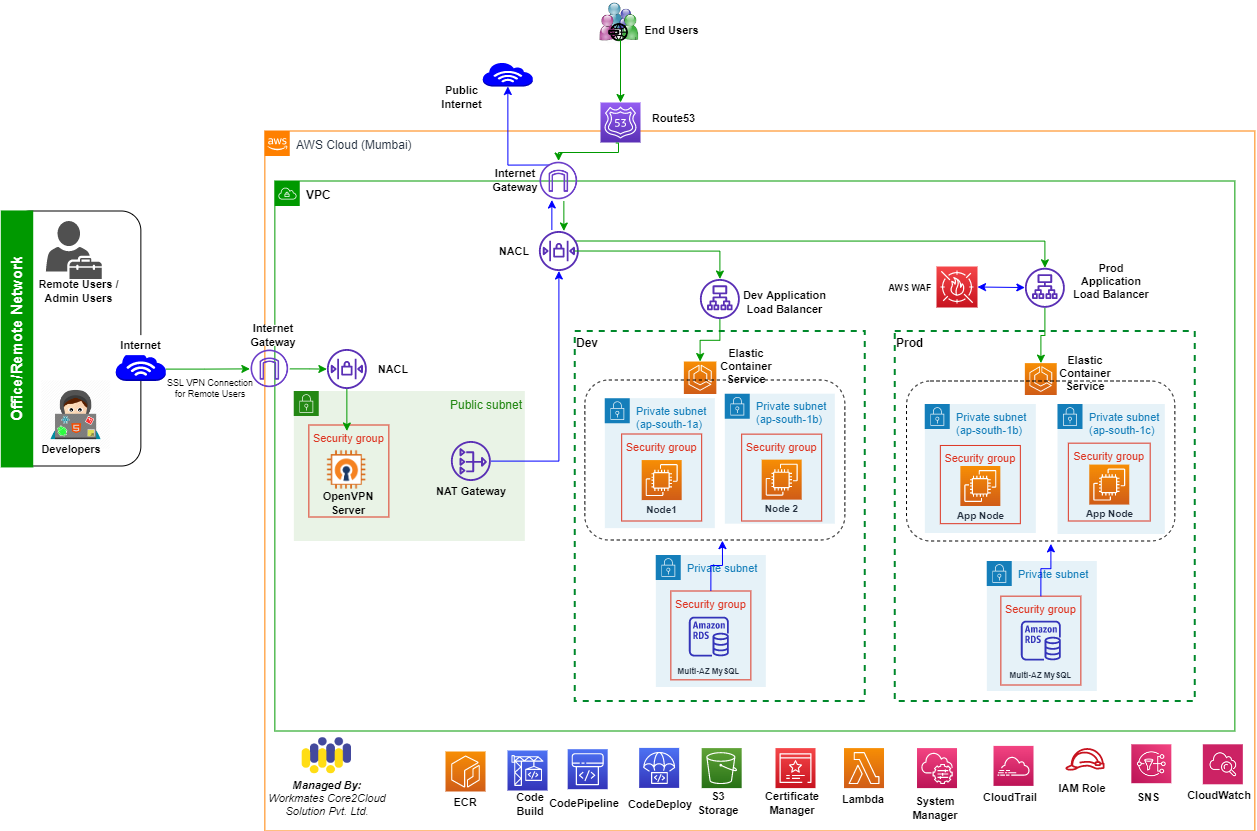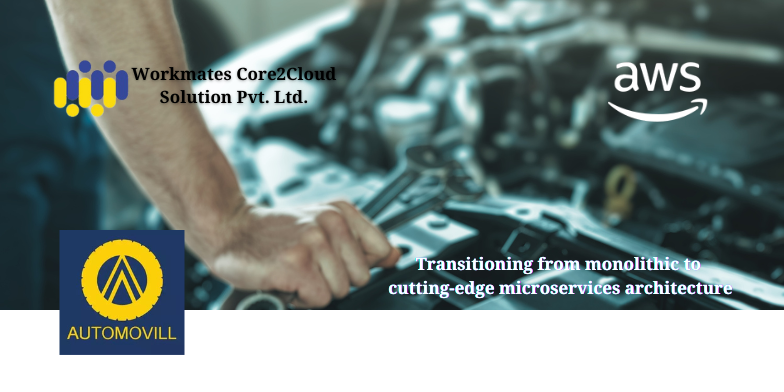About the customer
Automovill is a unique platform to aggregate automobile service providers, where we connect vehicle owners with all kind of automobile service providers under one roof. The unified platform helps users to book for the service they want and Automovill handles the request with the nearest or most apt service provider in a hassle free and efficient manner
Apart from car service we can also search anything related to vehicular needs like puncture, Bike Service, Seat Covers, Car Accessories, Towing Service, Car Wash etc.
Customer Challenge
- Scalability Constraints: The monolithic architecture hindered independent scaling of components, causing inefficiencies during peak loads. This resulted in difficulty accommodating increased user traffic.
- Innovation Bottlenecks: Complexities in modifying the monolith stifled innovation and responsiveness to customer needs, slowing down the introduction of new features and improvements.
- Maintenance Complexity: Managing a growing codebase and dependencies became unwieldy and error-prone, leading to increased maintenance overhead and potential system instability.
- Lack of CI/CD: Absence of robust CI/CD pipelines hindered the automation of testing and deployment, amplifying challenges related to ensuring application stability and reliability.
- Downtime Impact: Frequent deployment issues caused substantial downtime, negatively affecting user experience and profitability. The application’s reliance on a public subnet exacerbated downtime concerns by making it vulnerable to external disruptions.
- Security Challenges: Hosting the application in a public network introduced significant security challenges, such as increased exposure to potential cyber threats and vulnerabilities. This made the application more susceptible to security breaches and data leaks.
Workmates Core2Cloud Solution Approach
- We have analyzed the client’s application logical modules suitable for microservices.
- Each module had isolated as a microservice with well-defined boundaries and responsibilities and communication between microservices had been organized, such as RESTful APIs, message queues, or other mechanisms.
- To enable secure access, an SSL VPN was configured on the public network, allowing administrative users to access the clusters via this SSL VPN tunnel.
- The architecture was designed using microservices, and AWS Elastic Container Service (ECS) was employed to manage web applications and APIs.
- Infrastructure provisioning was automated on the AWS cloud using AWS CloudFormation.
- A comprehensive Continuous Integration/Continuous Deployment (CI/CD) pipeline was implemented using AWS Code Pipeline.
- AWS CloudFormation templates were leveraged to automate the deployment of the entire architecture.
- We collaborated with the customer’s team to prepare non-root Docker containers, aligning with the microservices approach.
- Docker containers were stored in Amazon Elastic Container Registry (ECR), and access to the registry was managed via IAM roles.
- To ensure high availability and efficient traffic management, an AWS Application Load Balancer was configured for each workload.
- For the production phase, MYSQL databases were deployed on Amazon Elastic Compute Cloud (EC2) instances as a standalone cluster.
- AWS CloudWatch was enabled for infrastructure and application monitoring, facilitating robust microservices monitoring.
- Infrastructure and database backups were stored on Amazon S3 with a 15-day retention policy, providing accessible backup data at any time.
- AWS Config was implemented for continuous monitoring, assessment, and change management of AWS resource configurations.
- Systems Manager Patch Manager was configured to scan EC2 instances, assess compliance, and schedule patch installations.
- Parameter Store (Systems Manager) was utilized to securely store secrets and credentials. These secrets were securely accessed during the deployment stage of the CI/CD pipeline.
Results and Benefits
- Improved Uptime and Reliability: The company experienced a substantial reduction in downtime. AWS’s high availability and redundancy features ensured that the SAP B1 application and HANA Database were consistently accessible, enhancing overall system reliability.
- Scalability for Business Growth: AWS’s cloud infrastructure provided the flexibility to scale resources up or down as needed, allowing Popular Shoe Mart to accommodate increasing demands during peak business periods and future growth.
- Enhanced Data Protection: The company improved its backup and disaster recovery practices by leveraging AWS’s object-based storage and backup solutions. This enhancement ensured that data was secure and easily recoverable in case of any service outage or data loss.
- Modernized Infrastructure: Popular Shoe Mart successfully upgraded its SAP system to SAP B1 with HANA Database, utilizing the latest technology for improved performance and efficiency.
- Efficient Resource Management: The AWS Cloud allowed for optimized resource management, enabling cost-efficiency and eliminating the need for excessive capital expenditure on infrastructure.
- Managed Services: By partnering with an AWS Managed Service Provider, the company could rely on expert management and maintenance of its AWS infrastructure. This offloaded the responsibility of day-to-day management tasks, allowing the internal team to focus on core business activities.
- Business Continuity: The AWS environment, including AMI backups and EBS snapshots, ensured business continuity and minimized disruptions during system issues or failures.
- Data Security: Popular Shoe Mart benefited from AWS’s robust security features, safeguarding sensitive customer and business data from potential threats.
Security Considerations
- AWS IAM role-based access control to restrict users to only the required resources.
- Deep visibility into API calls are maintained through AWS Cloud Trail, including who, what, and from where calls were made. All user related activities are tracked and logged.
- For any Administrative task Remote user have need to connect to VPN client for accessing the servers. All the RDP/SSH port are bound with OpenVPN server, also default ports will be changed to the custom port.
- The DB ports are accessible only from the Application containers and are restricted using Security Group.
- All the container workloads are under the private subnets, the Fiori application are exposed using the Application Load Balancer. SSL listeners has been setup for ALB and certificate has been issued using AWS ACM.
AWS Services used:
AWS ECS, EC2, ALB, S3, CloudFormation, Autoscaling, CloudWatch, RDS, Lambda, CloudTrail, EC2 Lifecycle Management, VPC Endpoint, CloudWatch Logs, AWS Config, Security Hub, AWS SNS, Code Pipeline, Code Deploy, Code Build.
CICD Architecture and Flow

Solution Architecture

